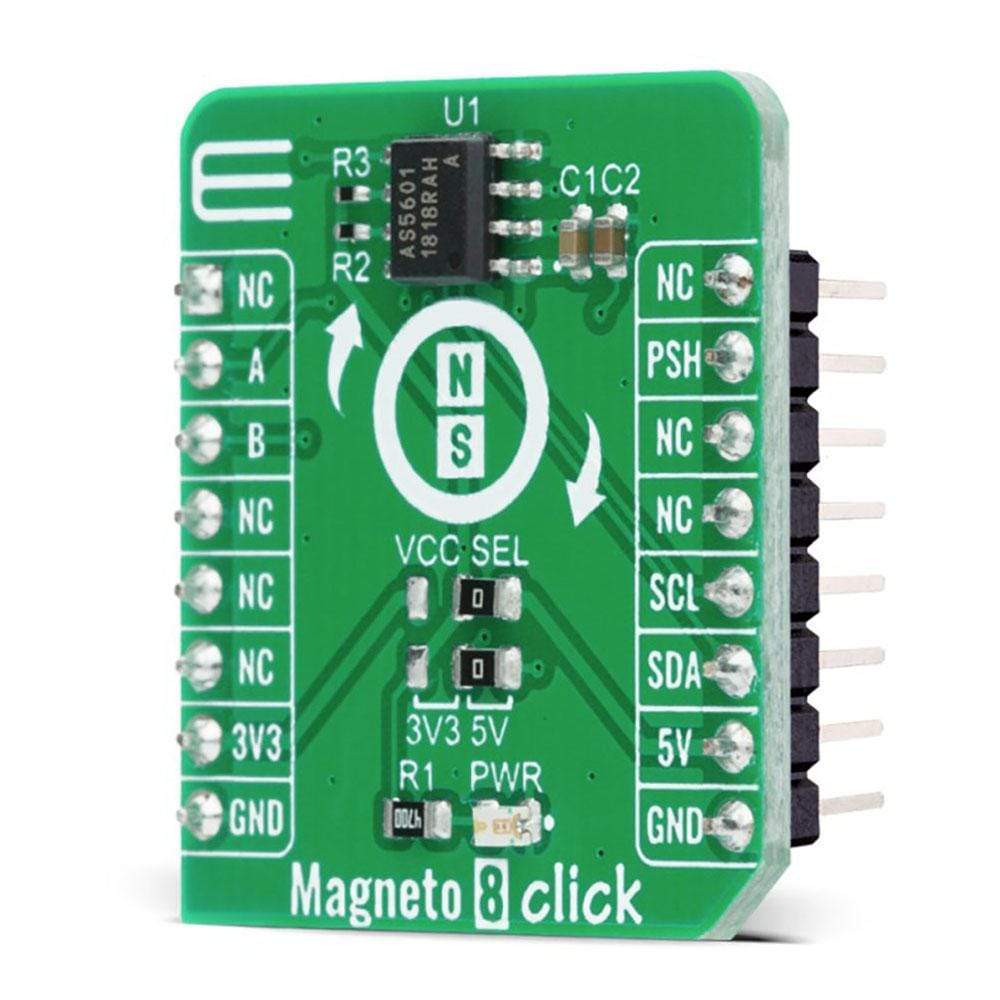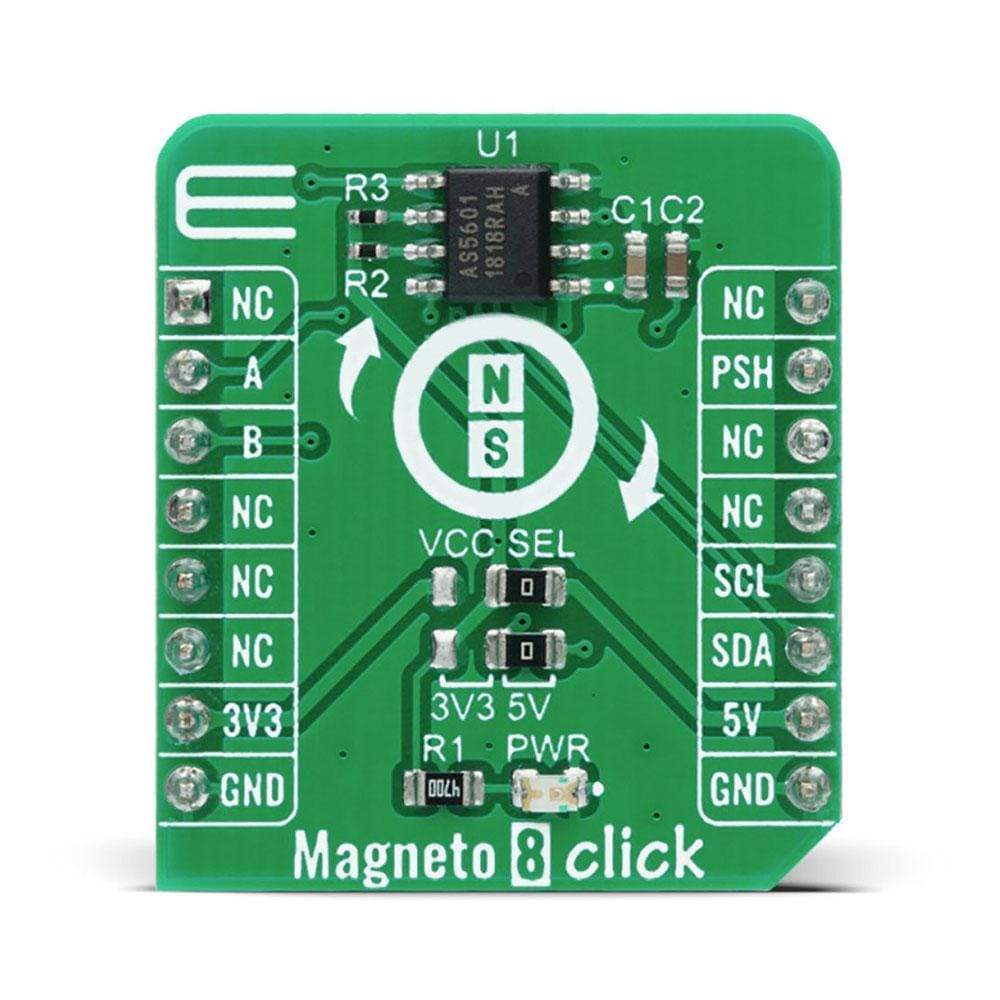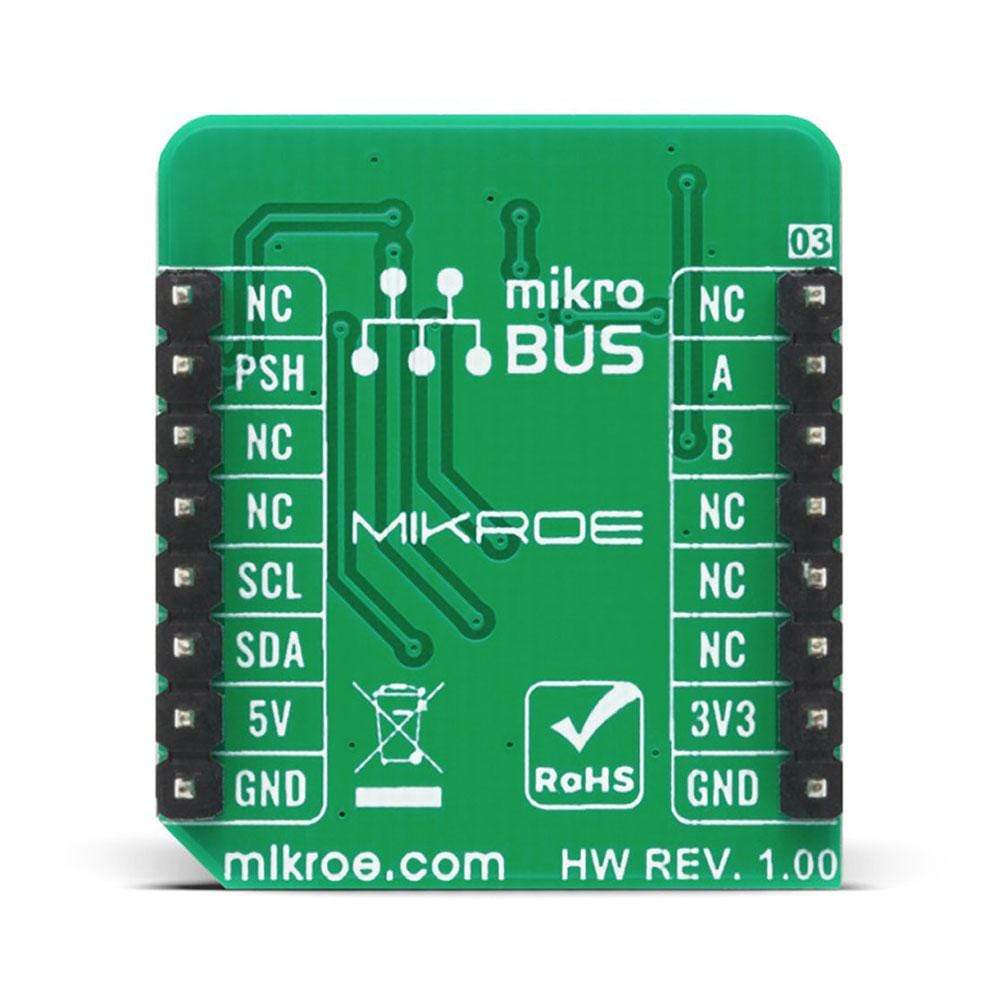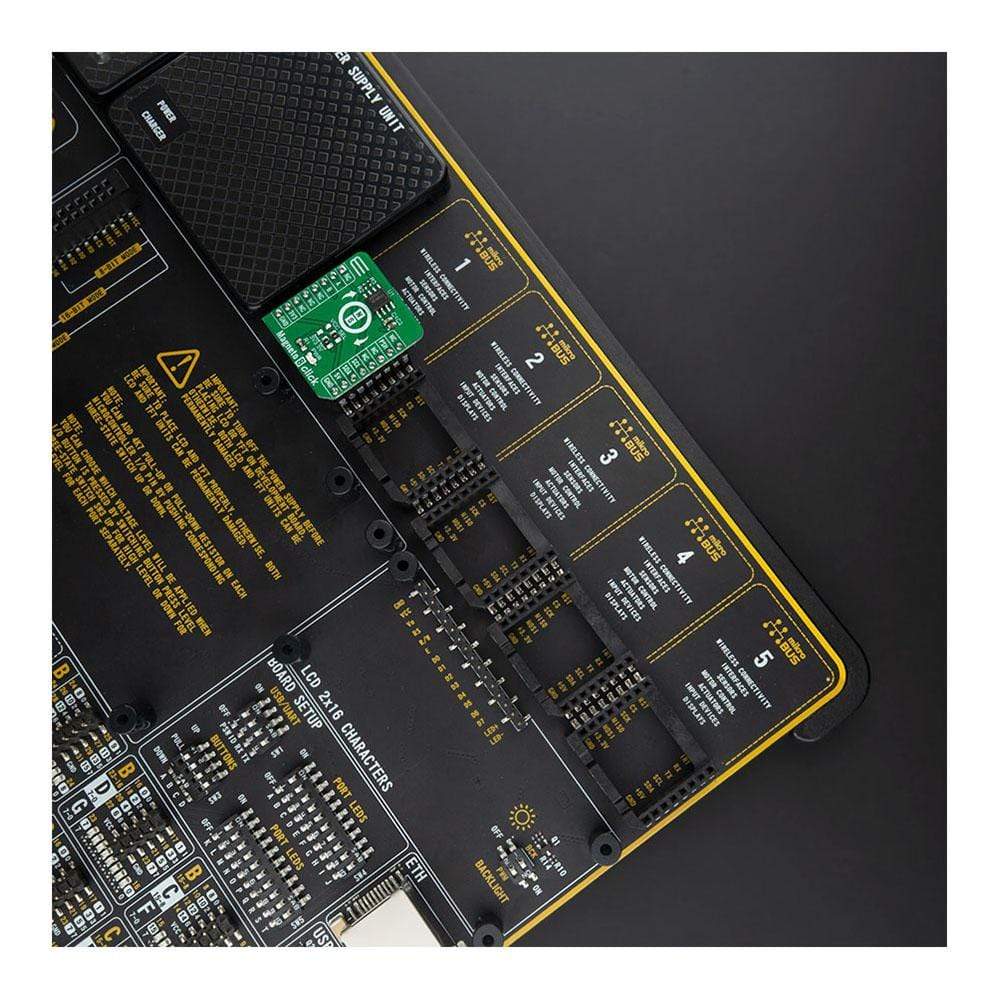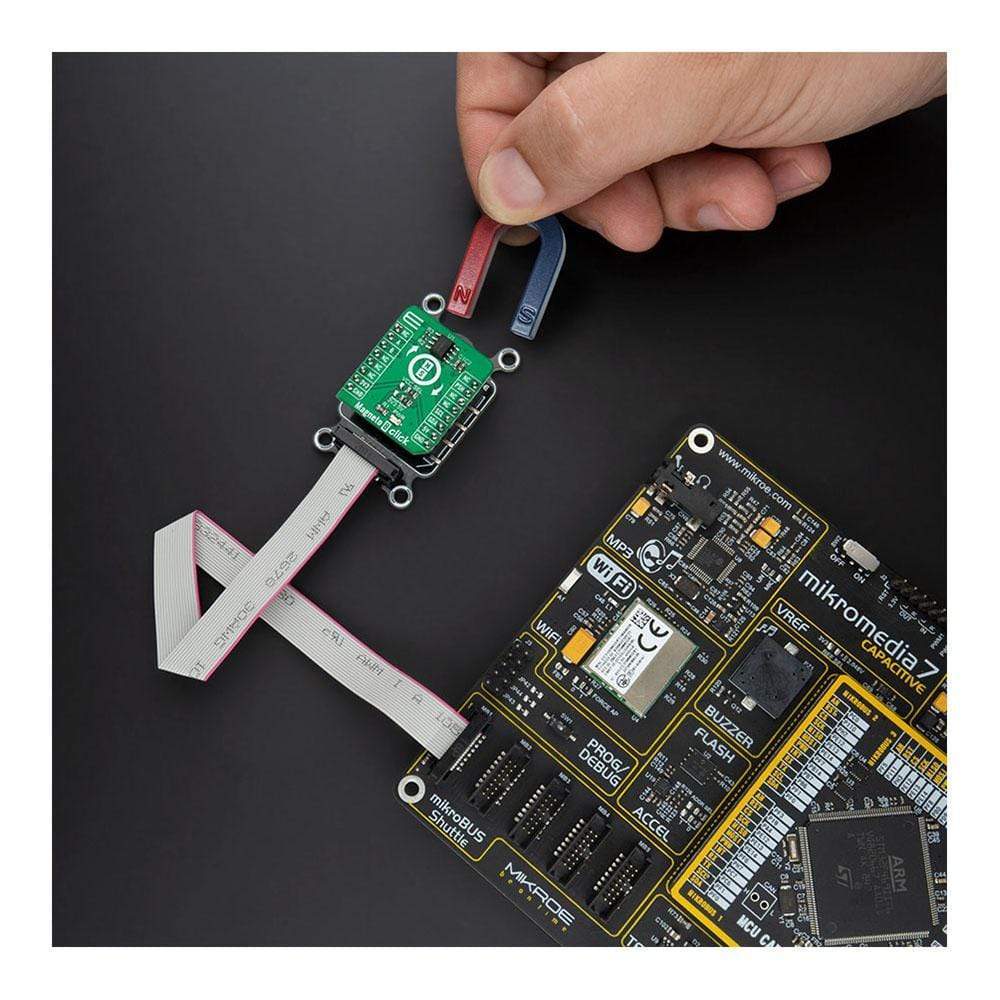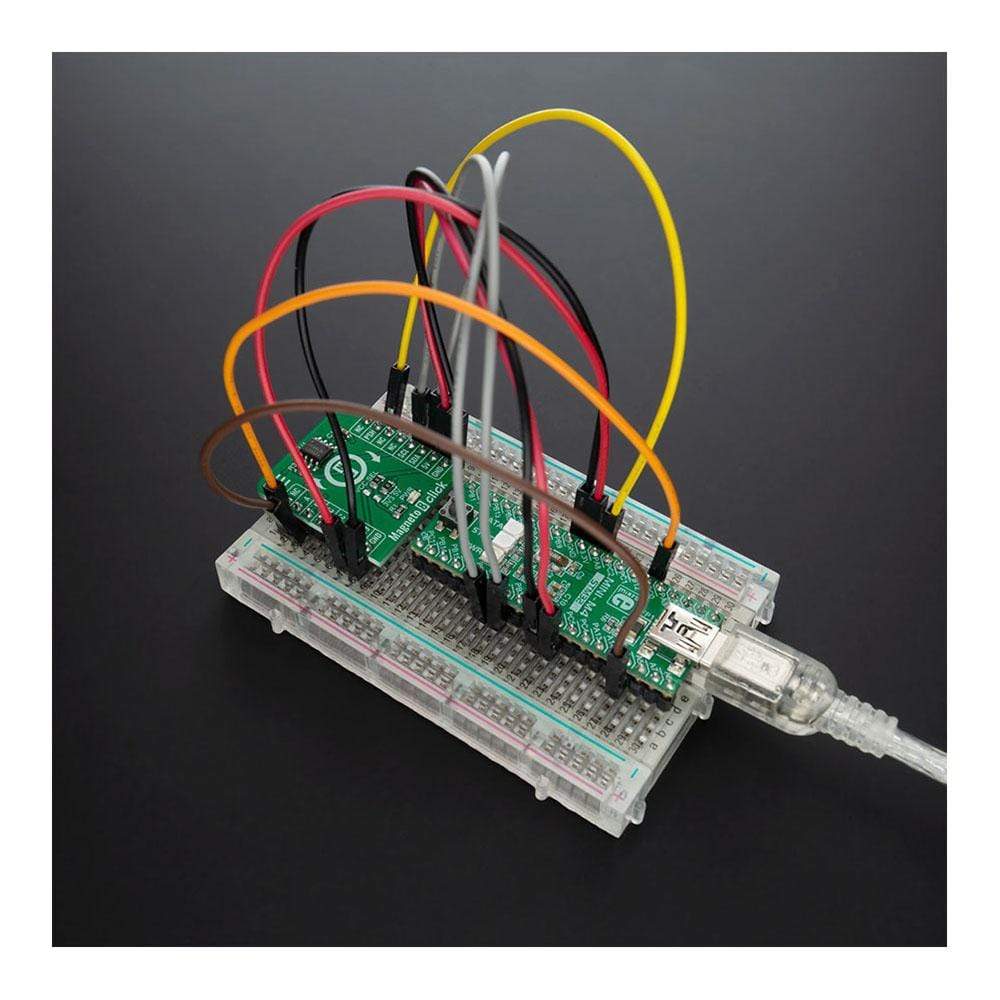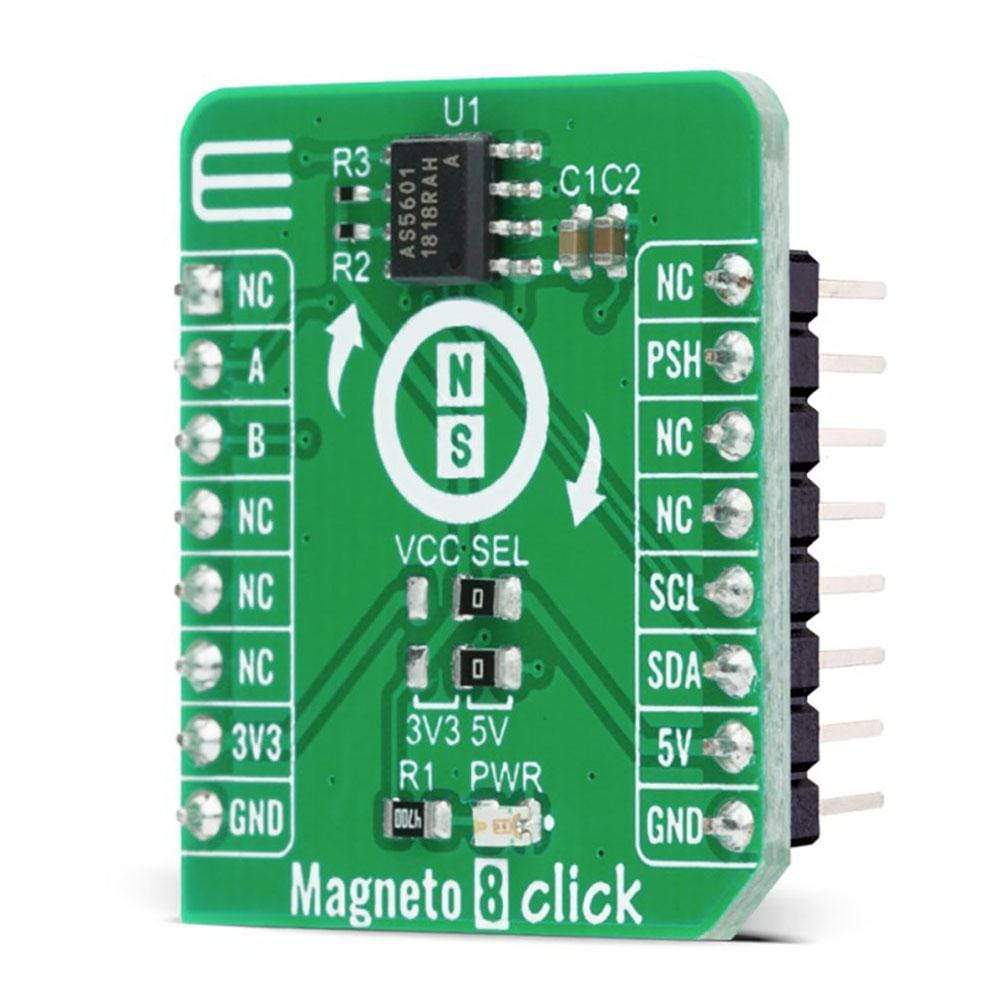
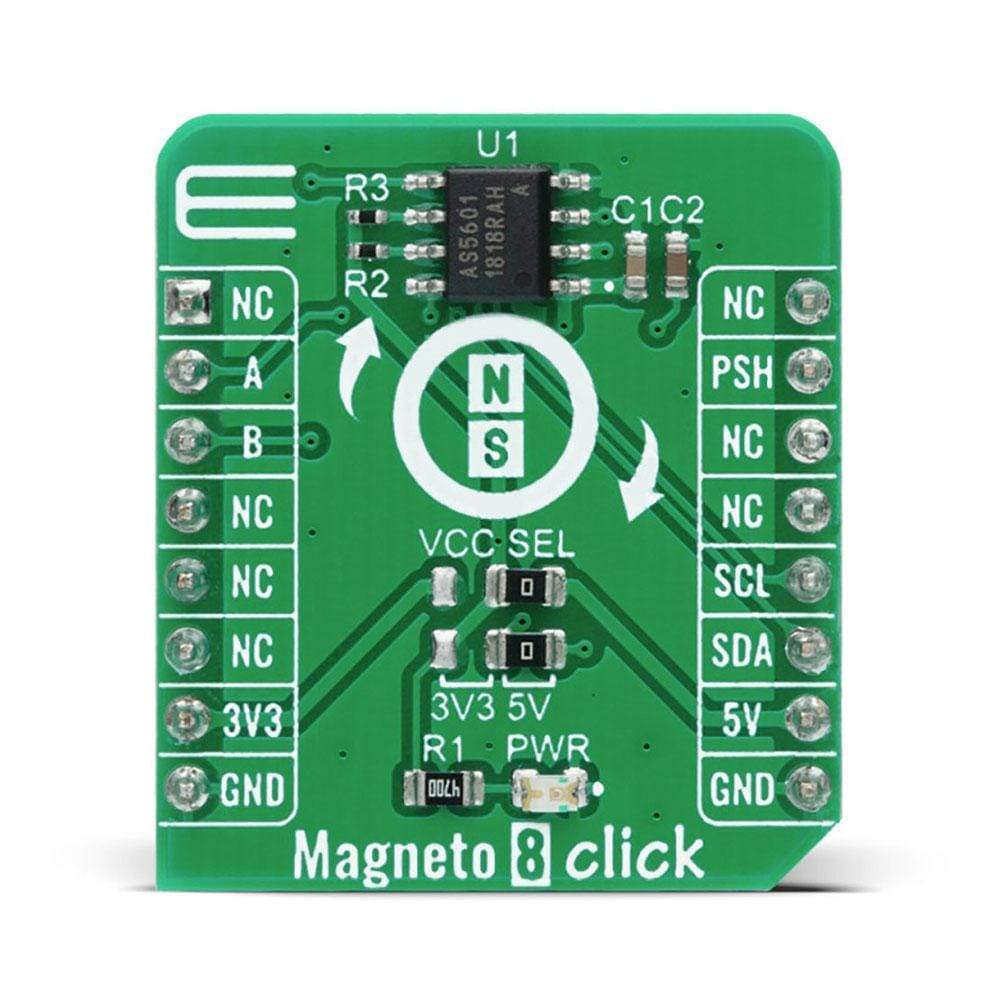
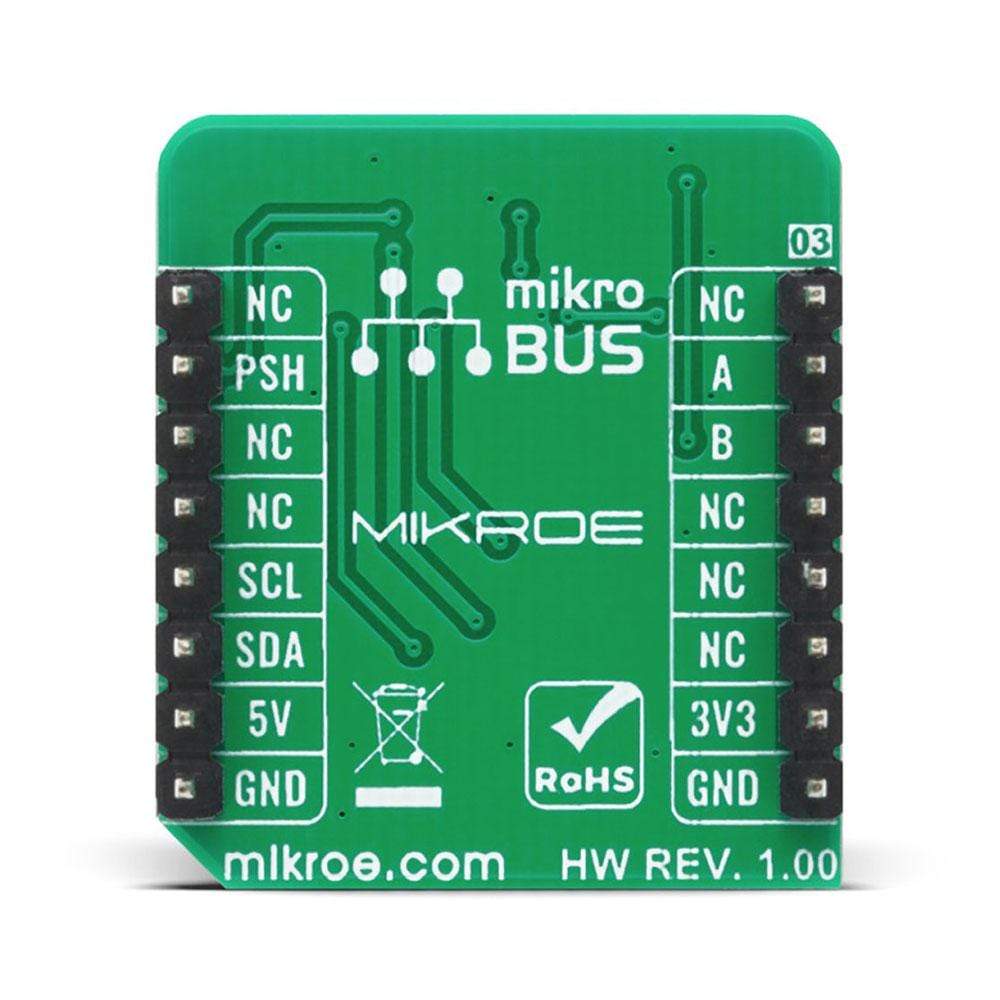
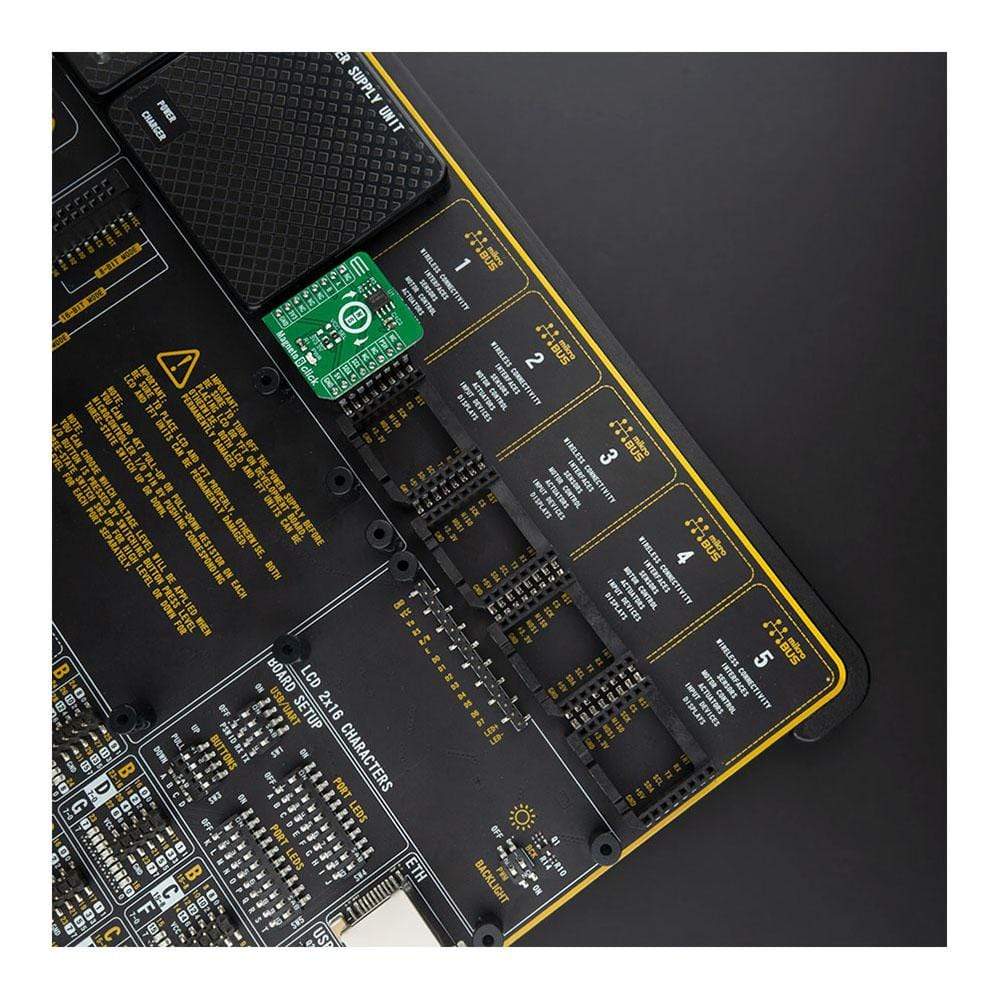
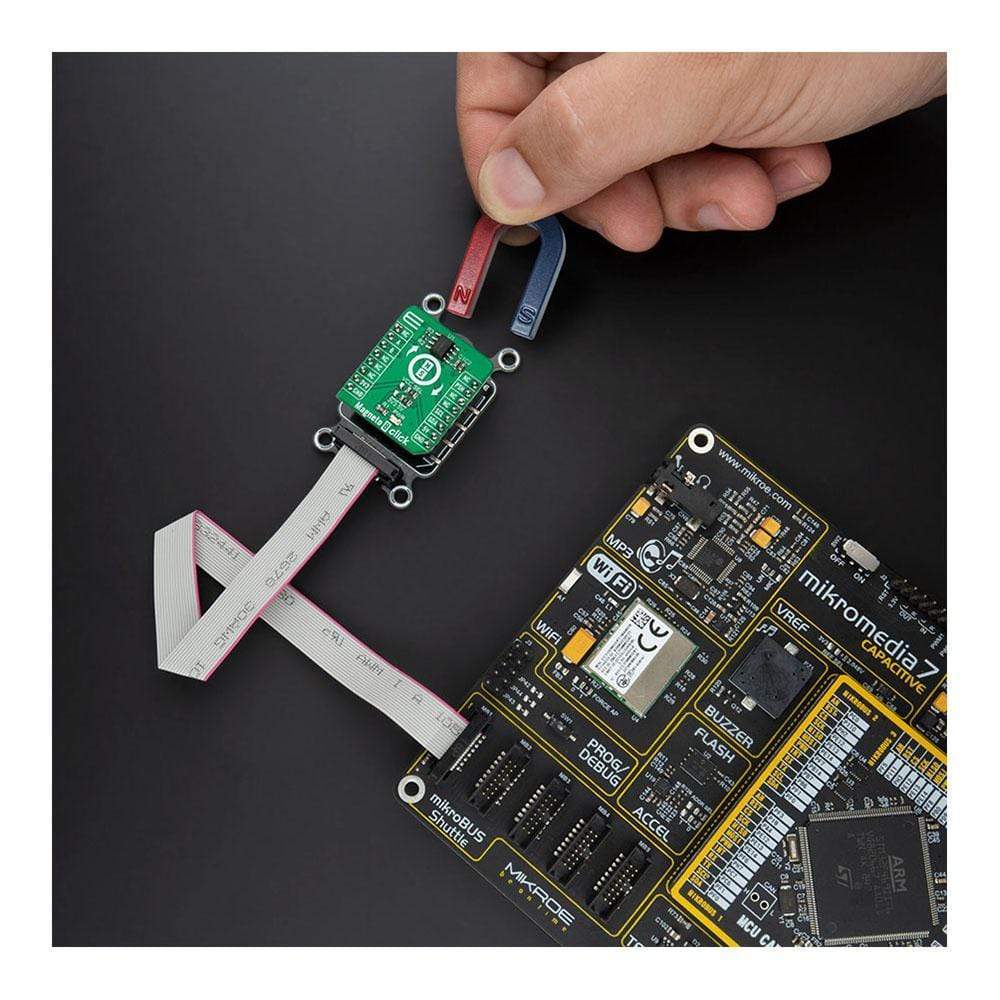
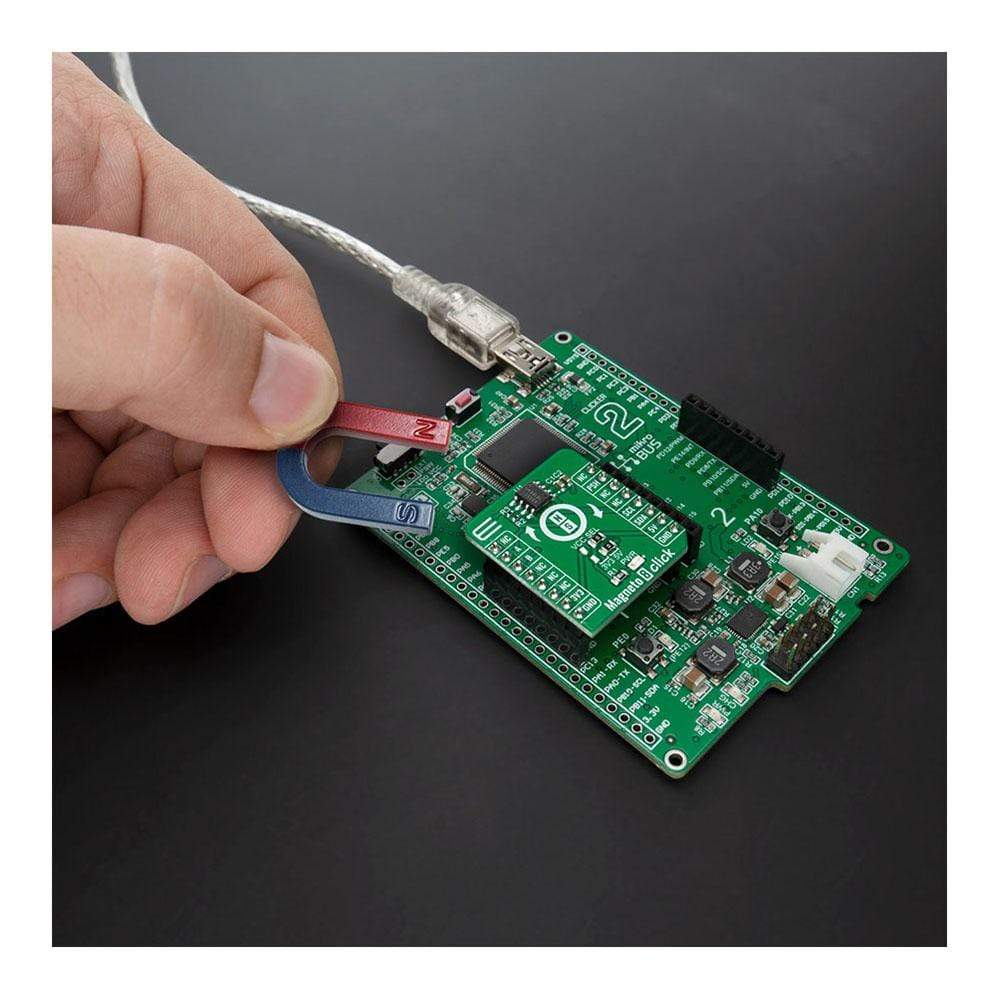
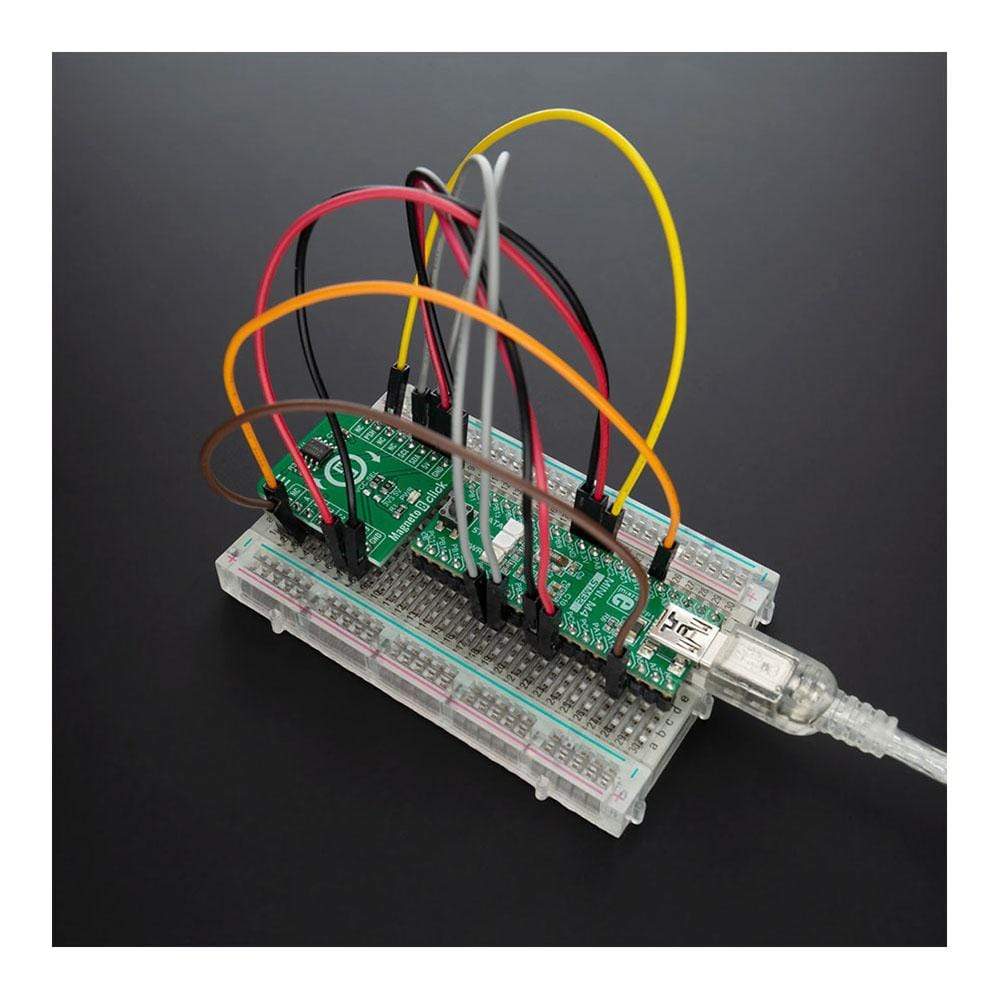
Overview
The Magneto 8 Click Board™ is a compact add-on board that contains an easy-to-program magnetic rotary position sensor with incremental quadrature (A/B) and 12-bit digital outputs. This board features the AS5601, 12-bit programmable contactless encoder IC from AMS-AG. This Click Board™ is based on a planar Hall sensor technology, supports an industry-standard I2C interface, and it measures the orthogonal component of the flux density (Bz) from an external magnet. It also provides a smart low-power mode that automatically reduces power consumption. Magneto 8 Click has many features that make it attractive for various applications such as angular position measurement solutions, encoder replacement, contactless magnetic position sensors, and more.
The Magneto 8 Click Board™ is supported by a mikroSDK compliant library, which includes functions that simplify software development. This Click Board™ comes as a fully tested product, ready to be used on a system equipped with the mikroBUS™ socket.
Downloads
La carte Click Board™ Magneto 8 est une carte complémentaire compacte qui contient un capteur de position rotatif magnétique facile à programmer avec quadrature incrémentale (A/B) et sorties numériques 12 bits. Cette carte est équipée du circuit intégré d'encodeur sans contact programmable AS5601 12 bits d'AMS-AG. Cette carte Click Board™ est basée sur une technologie de capteur à effet Hall planaire, prend en charge une interface I2C standard de l'industrie et mesure la composante orthogonale de la densité de flux (Bz) à partir d'un aimant externe. Elle fournit également un mode basse consommation intelligent qui réduit automatiquement la consommation d'énergie. La carte Click Magneto 8 possède de nombreuses fonctionnalités qui la rendent intéressante pour diverses applications telles que les solutions de mesure de position angulaire, le remplacement d'encodeurs, les capteurs de position magnétiques sans contact, etc.
La carte Click Board™ Magneto 8 est supportée par une bibliothèque compatible mikroSDK, qui comprend des fonctions qui simplifient le développement logiciel. Cette carte Click Board™ est un produit entièrement testé, prêt à être utilisé sur un système équipé du socket mikroBUS™.
| General Information | |
|---|---|
Part Number (SKU) |
MIKROE-4204
|
Manufacturer |
|
| Physical and Mechanical | |
Weight |
0.017 kg
|
| Other | |
Country of Origin |
|
HS Code Customs Tariff code
|
|
EAN |
8606027380150
|
Warranty |
|
Frequently Asked Questions
Have a Question?
Be the first to ask a question about this.

